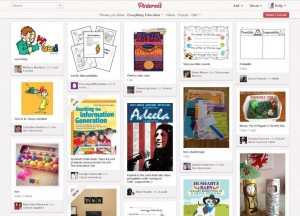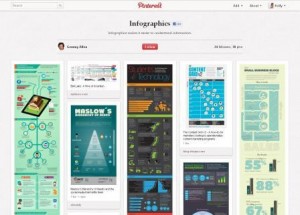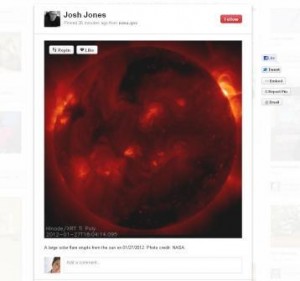You may have heard of Pinterest, the new social media platform that is taking the web by storm. Pinterest is like a virtual pinboard, where you share images you like either gathered from the web (like a shared bookmark) or uploaded from your own collection. Users can create boards on any theme and these are also tagged in categories, so you can browse through History or Technology, for example, and re-pin other people’s favourites to your own pin boards. You can follow other people’s boards and you can also integrate it with your facebook or Twitter accounts.
A Pin it! bookmarklet to add to your browser makes it easy to grab web content.
The joy of Pinterest is its visual nature – you can’t save text-only content, only material with images attached (even if it’s a web page with lots of text and only one image). That makes it perfect for gathering items together like a scrapbook.
Interestingly, most data so far indicates that the vast majority of its users are women. That’s not surprising, as many of the early users did use it as a scrapbook, so that some of the most glorious image collections are in themes like historical fashion and home decor – including drool-worthy bookshelves and libraries (there are also a lot of recipes).
But dig a little deeper – if you can – and you’ll soon recognise Pinterest’s value as an image repository, link sharing community, and easy-to-use site for students or classes to quickly assemble project materials on a huge range of topics.
Under the Education category you’ll find teaching materials and classroom activities gathered together by educators all over the world, and in other categories you and your students can find everything from historic photos of Victorian London or World War 1, to images of shoes worn in 1770 or wildlife or botanical drawings.
These “pins” can be shared on social media or embedded in blogs or websites.
Pinterest is deceptively simple and dangerously addictive. Beware.



